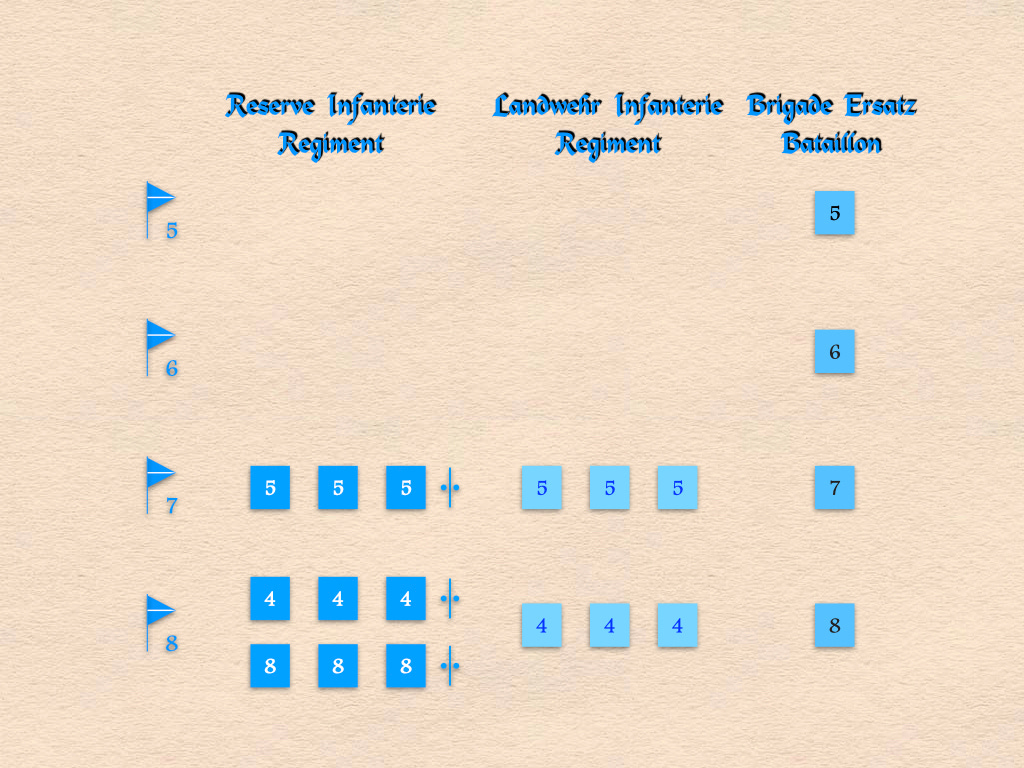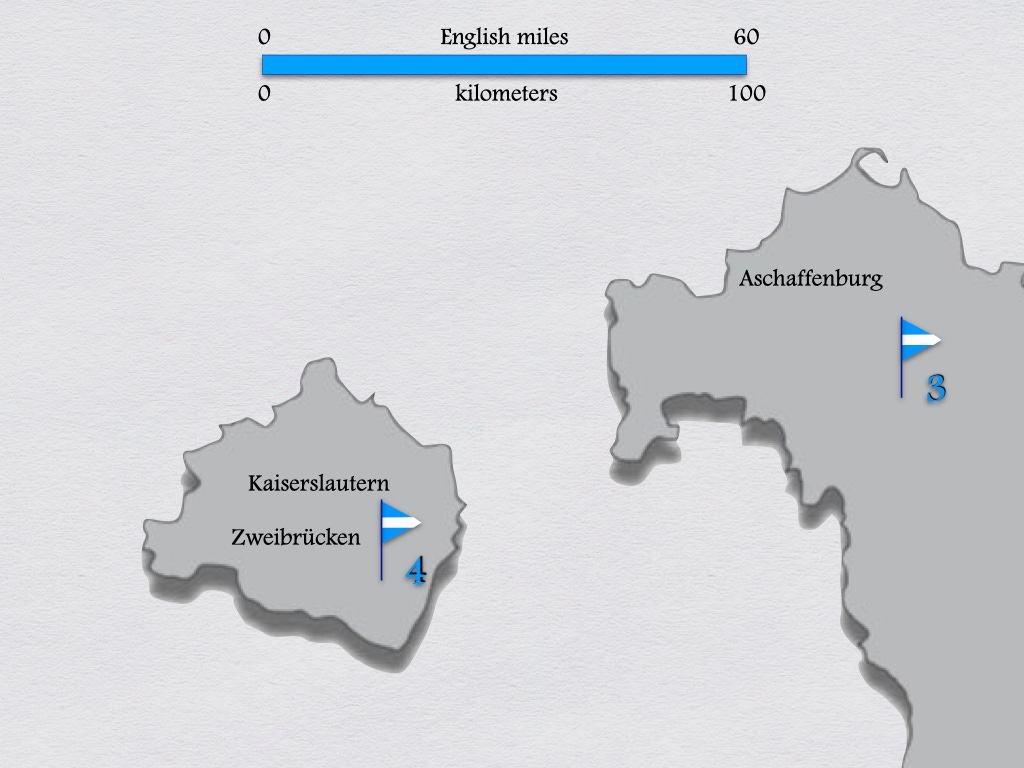When it came to raising second-line infantry units, the I Army Corps of the Kingdom of Bavaria proved “practically perfect in every way.” The II Army Corps, however, did things differently. Rather than raising four Reserve regiments and four Landwehr regiments, the stay-behind authorities of the latter formation assembled but five second-line infantry regiments. Moreover, rather than distributing the work of organizing these units among its four brigades, the II Army Corps let two brigades do all of the heavy lifting.
One possible explanation for this lopsided approach lies in the size of the home stations of the two “unproductive” brigades: Zweibrücken (5th Brigade) and Landau (6th Brigade.) Located along the edge of the Vosges mountains, these towns were much smaller than the cities that hosted three of the brigades of the I Army Corps: Munich (1st and 2nd Brigades) and Augsburg (3rd Brigade). At the same time, Neu-Ulm, which was only slightly larger than either Zweibrücken or Landau, was home to the 4th Brigade, which exceeded its “quota” of second-line units by a little more than forty percent.1
A more fruitful line of inquiry begins with the realization that the peacetime station of the 8th Brigade of the Bavarian II Army Corps was the fortress town of Metz. Located in the Imperial Territory [Reichsland] of Lorraine, the 8th Brigade was obliged to draw its peacetime recruits, and thus its wartime reservists, from places other than its immediate neighborhood.
The tale of the mobilization of the 8th Reserve Infantry Regiment supports this thesis. Rather than taking place in Metz, it occurred in the Bavarian towns of Zweibrücken, Kaiserslautern, and Aschaffenburg.2 The first two of these towns were located in the Palatinate [Pfaltz], an exclave of the Kingdom of Bavaria that served as the recruiting grounds of the 4th Infantry Division. Aschaffenburg, however, was located in the bailiwick of the 3rd Infantry Division, the headquarters of which was located in Würzburg.
A normal brigade produced one Reserve regiment (twelve infantry companies and one machine gun company), one Landwehr regiment (twelve infantry companies), and one brigade Ersatz battalion (four infantry companies). The 4th Infantry Brigade produced two Reserve regiments, one of which lacked its machine gun company. Thus, rather than mobilizing twenty-nine second line companies, it mobilized forty-one.
Herbert Ritter von Wurmb, Das KB Reserve-Infanterie Regiment Nr. 8 (Munich: Max Schick, 1929) page 11




